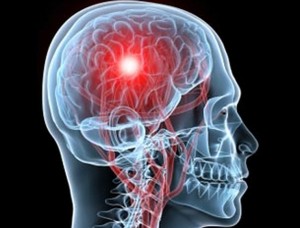 Although scientists know that depression affects the brain, they don’t know why some people respond to treatment while others do not.
Although scientists know that depression affects the brain, they don’t know why some people respond to treatment while others do not.
Now a team of UCLA researchers has shown for the first time in a large cohort of patients that electroconvulsive therapy (ECT), sometimes referred to as shock treatment, change certain areas of the brain that play a role in how people feel, learn and respond to positive and negative environmental factors. The team imaged the hippocampus and amgydalar in patients before, during and after undergoing ECT and compared those images to healthy control subjects.
They also showed that the hippocampus changes, or increases in size, correlated to improved mood in patients with major depression and indicated how well they were responding to treatment. Additionally, using leading-edge methods to look at brain shape, the team showed that parts of these structures change more with treatment, providing vital clues to how the connections in the brain may be used to select for patients who will respond well to treatment.
That would also result in sparing those patients who won’t respond from months of taking drugs that ultimately won’t work for them, said study senior author Katherine L. Narr, an associate professor of neurology.
“Major depression is common, affects all ages, races and ethnic groups and has a serious consequence on people’s family lives and work,” Narr said. “People with depression also are at higher risk for suicide, which accounts for more deaths than car accidents, natural disasters and war each year on average. Unfortunately, standard types of medication used to treat major depression take a long time to work, and for at least a third of people, the medication will not work well enough to provide any real help.”
The study appears in the early online edition of the peer-reviewed journal Biological Psychiatry.
ECT, which has been used for more than 50 years, carries with it a certain stigma. However, within the last decade, advances in anesthesia, electrical stimulation equipment and new evidence about electrode lead placement have improved safety and reduced side effects, said study first author Shantanu H. Joshi, an assistant professor of neurology.
Further advances in high-resolution MRI also allow the measurement of the induced brain changes with improved accuracy and precision.
“ECT has been shown to be very effective for treating patients with major depression who don’t respond well to other treatments,” Joshi said. “During the treatment course, ECT leads to plastic changes in the brain that are linked with improvements in mood. Specifically, we saw the hippocampus and amygdala – important for memory and emotion – are shown to increase in size. People with smaller hippocampal size prior to starting treatment are less likely to respond as well to treatment. While our research investigates structural neuroplasticity in depression in response to ECT, our findings are considered to be of much broader interest to the field.”
In addition to ECT, the team expects that the effects shown would extend to more standard, less rapidly acting antidepressant treatments and could be used to predict patient response.
In this study, the team imaged 43 patients undergoing ECT at three time points, before beginning treatment, after the second ECT session and within one week of completing treatment, resulting in 129 brain scans. They also imaged 32 healthy controls twice, and compared those images to the ECT patients.
Going forward, the UCLA team will examine the relationship between the hippocampal structural neuroplasticity and its neurochemistry in terms of the metabolite response, which has important implications for understanding the brain’s metabolic regulation and the excitation and suppression as a response to ECT. Additionally, the hippocampal and amgydalar shape will be used as features for classification and prediction of depression diagnosis and treatment response using advanced machine-learning techniques. The changes in the hippocampal and the amgydalar structure will be further investigated with regards to novel disease maintenance treatments along with relapse/recurrence rates.
Major depression affects 350 million people each year and leads to enormous personal suffering, loss of productivity and is a burden to family, the health care system and the economy. Finding better ways to select patients for treatments that will alleviate their symptoms would go a long way to reducing that suffering, Narr said.
“Our findings newly show that hippocampal structure prior to ECT may be an important indicator of treatment outcome,” the study states. “That is, patients with smaller hippocampal volumes at baseline are shown to more likely exhibit increases in volume with ECT and to show concomitant improvements in clinical symptoms. Results further indicate that both clinical response to ECT and ECT-induced changes in volume occur rapidly.”



